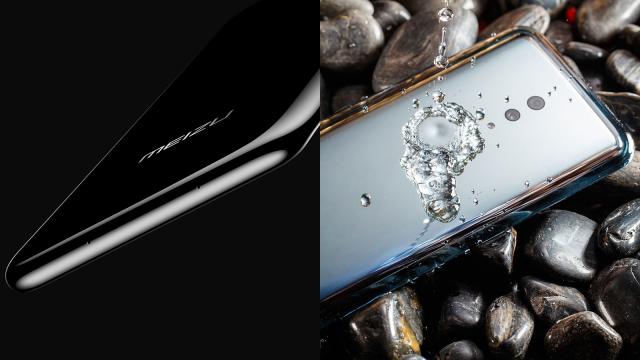Slowly but surely, ports have been falling off our devices, and as a preview of our fully wireless future, Meizu and Vivo recently released seamless phones with nary an opening. But despite how slick those devices appear, (and my personal desire to banish wires to the shadow realm), the world simply isn’t ready for phones (or laptops) that don’t have ports. At least not yet.
On the new Meizu Zero—which deserves some bonus points for having very on-brand name—the company forgoes USB ports, SIM card slots, traditional speaker holes, and even physical buttons in exchange for a nearly flawless ceramic unibody frame whose only blemishes are a camera bump and handful of tiny microphones holes scattered across its body.
Replacing all that legacy tech is a touch-sensitive power button on the side, eSIM support, an in-screen fingerprint reader, and 18-watt wireless charging. That last feature is no joke as that’s the same charging speed you get from most wired chargers. Meizu even added what it calls mSound 2.0 In-Screen Sound tech that allows the entire display to function like a traditional speaker by vibrating the screen in just the right way, which means the Zero doesn’t even need an earpiece.
Meanwhile, Vivo’s Apex 2019 concept pushes the whole no-ports idea one step further by making its rear cameras completely flush with its body, eliminating the selfie cam entirely, and the packing the phone full of the the best possible specs including 12GB of RAM, a Snapdragon 855 processor, and a 5G-ready Qualcomm X50 modem.
Vivo claims the Apex 2019’s in-screen fingerprint reader even covers phone’s entire display, and to alleviate any concerns about charging or transferring data without the use of ports, Vivo created a special “MagPort” connector that handles both functions. Now I guess that last innovation technically prevents the Apex 2019 from being truly port-less, but could be a neat extra for anyone still yearning for the MagSafe ports on old MacBooks.
Both devices look more sophisticated than anything that ever appeared on Star Trek, but even if you could get your hands on them, you’d have to be delusional to actually consider buying one.
I’m all for wireless tech. I’ve got wireless chargers in almost every room of my apartment (even the bathroom), and I even bought multiple wireless keyboards for my desktop PC, even though the idea of needing to cut the cord on something I rarely used away from my desk was a misguided attempt to make my life fit the tech. That’s because in today’s world, a device with no ports just doesn’t make sense.
Without even touching the ongoing gripes about companies killing the headphone jack, the biggest problem with a fully wireless device is keeping it powered up. That’s not to say wireless charging is useless, it’s just more of a supplementary convenience that makes it easy to keep devices topped up while you’re busy doing other things. The problem is that if you’re getting low on juice, but still want to watch a movie, check your emails, or anything else, using your phone and charging it wirelessly is awkward at best.
If you have a flat charger, you basically have to make an unsavoury tech sandwich out of the phone and the charging pad if you want to use it anywhere other than on a flat surface. And while upright chargers like the Pixel Stand are a bit better, hunching over and pecking at the screen while your device sits in the cradle feels like a serious regression from simply plugging in a cord.
As for the vibrating screen speakers found on both the Meizu Zero and Apex 2019, while technically they can replace an earpiece, their sound quality is mediocre at best. Going with tech like that is essentially giving up on the ability to listen to music or movies on anything besides Bluetooth headphones.
As for eSIMS, support in the U.S. for that tech is currently spotty at best, with even iPhone users having difficulty getting things set up. AT&T just enabled support for eSIMs for iOS devices in early December, with Verizon and T-Mobile following shortly after. But there’s still aren’t a lot of options —especially for Android users—outside of that.
Then there’s 5G, which could make sending and receiving data without wi-fi so much faster. Except the networks aren’t ready, and there still aren’t really any 5G devices you can buy. Sure, the Apex 2019 has a 5G modem, but Vivo hasn’t released a price for it, and since its a concept device, it may never go on sale.
But all this doesn’t mean these no-port devices aren’t important. These phones are a big part of what helps push us closer to a wireless future that might work for everyone. Because by making potentially flawed devices, we can better figure out where the biggest pain points, and then work on addressing them.
And even though they aren’t perfect, both the Meizu Zero and Apex 2019 are devices that could slot right into many people’s lives without them ever noticing the downsides. That right there is a fantastic reminder of how much smaller the gap between wireless fantasy and wireless reality is now than it was just a few years ago.
